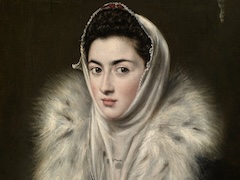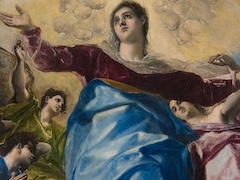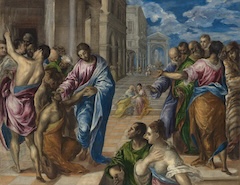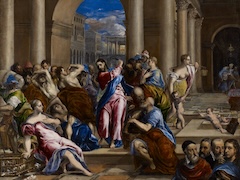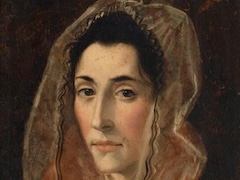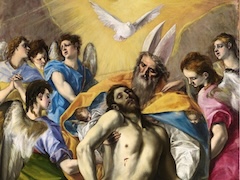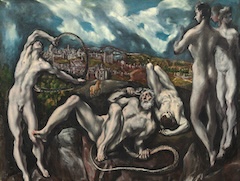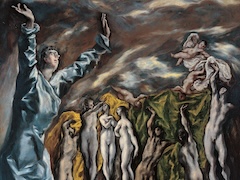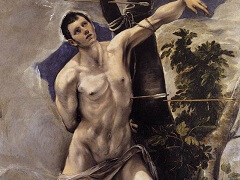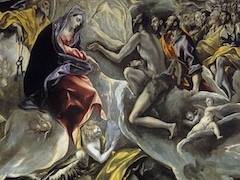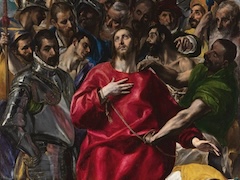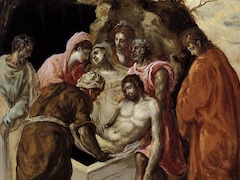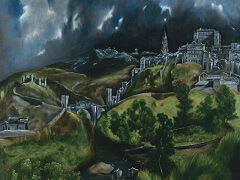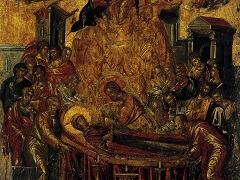The Adoration of the Shepherds, 1612 by El Greco
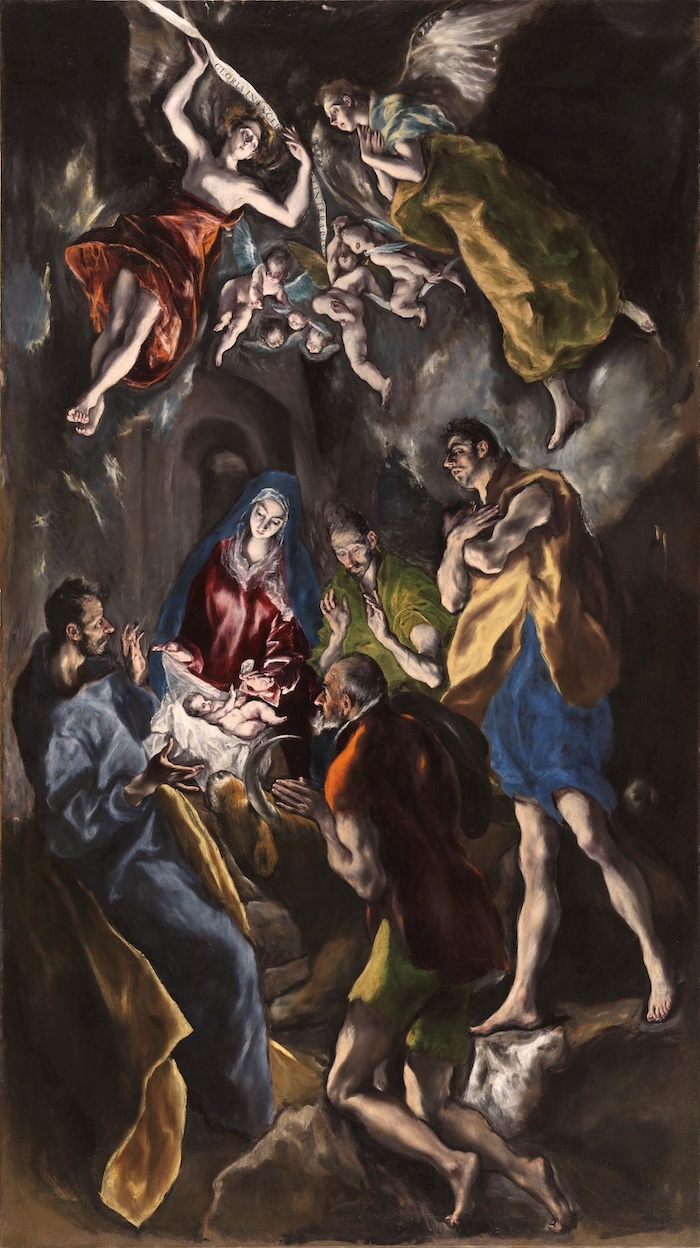
El Grecobegan to work on the The Adoration of the Shepherds in 1612, finishing it two years later, just before his death. The painting's subject is taken from the story of the Nativity: it depicts the shepherds witnessing the miracle represented by the newborn Jesus Christ in the stable where he was born. It is now owned by Madrid's Museo del Prado.
As was usual with El Greco's final works, the bodies of the shepherds are considerably distorted from their natural forms, contrasting with the more classical appearance of the angels who fly above the scene. This, combined with the unusual angles and poses of the characters, was intended to give an impression of ecstatic wonder. There is a great deal of contrast between light and shade in the work, with the combination of this and the picture's brilliant colors intended to further heighten the sense that the onlooker is witness to a world-changing event.
Extreme distortion of body characterizes the Adoration of the Shepherds like all the last paintings of El Greco. The brilliant, "dissonant" colours and the strange shapes and poses create a sense of wonder and ecstasy, as the shepherd and angels celebrate the miracle of the newly born child. The infant Christ seems to emit a light which plays off the faces of the barefoot shepherds who have gathered to pay homage to his miraculous birth. A rhythmic energy animates the painting, expressed in the dance-like motions of the figures. Striking contrasts between light and dark passages heighten the sense of drama. The group of angels which hovers over the scene may resemble the missing section of The Opening of the Fifth Seal.

